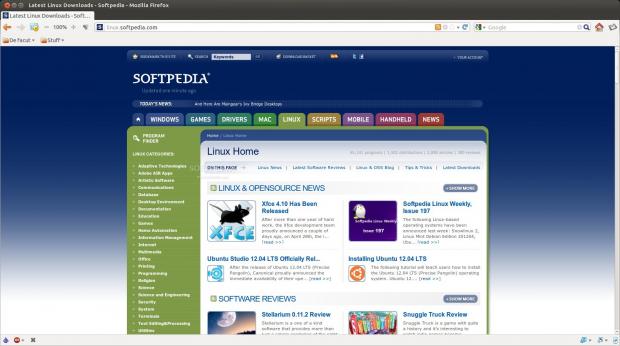Firefox is the second most used browser in the world, after Internet Explorer, so when a new version is launched people are going to be interested in what prompted this move from Mozilla and what are the major differences between the latest version, 4.0 and the 3.x series.
First impressions
Most likely, there's going to be some opposition, as there are major design modifications in Firefox 4. People aren't usually happy with change no matter how small or big it might be.
First thing users will see is the redesigned interface, which now tends to be a little "chromified". If you have yet to install Google Chrome, then a quick look at the bottom screenshots will clear that up. This look-alike feeling is even more obvious with the 'URL preview' feature.
If in Firefox 3.x hovering over an URL previewed that link in the status bar, in Firefox 4.0 the URL preview will be shown over the status bar, just like in Google Chrome, although in a more eye pleasing fashion.
Functionality
Tabs are now much better looking, with small gaps between them, transparent so they can borrow the color of whatever persona you are using and can be grouped by categories (a feature called Firefox Panorama). Most importantly they are now placed on top of the address bar by default.
You can now set different groups for work, e-mail, shopping, etc and moreover, every tab can be turned into a "pinned app" by right click and selecting the "Pin as App Tab" option.
With this option checked the tab will remain pinned even if you restart the browser, which is quite useful if you are working with Firefox on a daily basis and with one or more websites constantly.
A keener eye will also observe that the "refresh", "stop" and "go" buttons have disappeared, being replaced by a single one, at the end of the URL address field, that changes in regard to the current state of the website. This will more than likely upset people, so there will certainly appear extensions which will bring back the old format.
Unlike Google Chrome which has gathered every item in the menu bar into a single entry, Mozilla has opted to keep them on by default, although users can right click in the Menu Bar and uncheck the option to view it.
A small button appears in the right side, just like in Chrome or Opera, with everything crammed together. Mozilla has certainly observed the trend of minimalist browsers and provided users with the possibility to customize theirs in the same fashion.
Add-on Manager
The other major feature that got completely redesigned is the Add-on Manager, which is now a lot more spacious, giving it a cleaner look. The Add-on Manager opens up in a new tab, not a separate dialog, which makes it a lot easier to use and interact with.
Unfortunately, restarts are still required for most installed Add-ons, but it's a small price to pay for the abundance of extensions out there (even if some of the more important ones haven't been released yet for Firefox 4). Fortunately, there are now add-ons that do not require restart.
Most importantly, add-ons will be updated automatically, without any user input. This may not be a good thing, mostly because developers can sometimes change an important feature and some users will prefer to use an older version.
Cloud Sync and rendering engine
Another important feature that ships by default with the new Firefox 4.0 web browser is the Sync option, which can be found in the Preferences menu. Users are now able to sync their bookmarks, history, paswords, preferences and tabs on any computer.
In order to do this, they must sign-up for an account which will make sure that everything will be stored in a cloud environment, which is hardware independent. So, if you lose your favorites, history and so on, you'll be able to easily get the data back, on any computer, with just a username and password.
Firefox 4.0 now uses the Gecko 2.0 engine, which has improved the speed of the web browser. Still, it's not as fast as Opera or Google Chrome, but at least is a serious step forward and gives us hope that Mozilla can do better.
Firefox also features a new JavaScript engine, JägerMonkey, which will, supposedly, boost the performance quite significantly. This remains to be further tested, but, so far, it has proved to be rather useful.
The memory usage was also improved, Firefox now getting closer to a normal consumption. As far as we can tell, memory usage has dropped to almost half. The first thing we noticed was that we didn't have to restart the browser midday in order to clear the 600-700 Mb that were used.
Conclusion
The Firefox 4.0 web browser still doesn't seem as light as its competitors, but, maybe in the future versions, it will get even more optimized.
Even if some users disagree with the new look of Firefox 4.0, everyone will get on board eventually. Mozilla has finally got its web browser from the 90's look into the present, even if it's a little late to the party.
Rest assured that Google and Opera developers will not stand idle in the meantime and Mozilla will have to work a lot harder if they want to stay on the heels of Internet Explorer.
 14 DAY TRIAL //
14 DAY TRIAL // 








